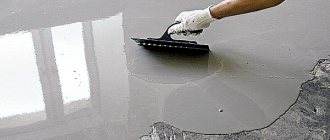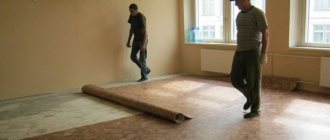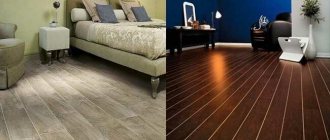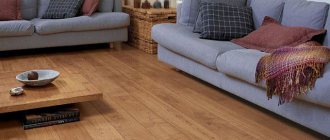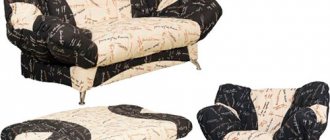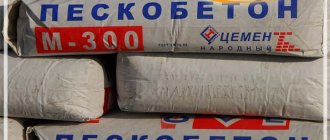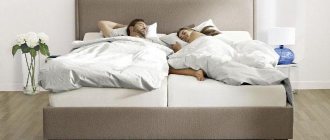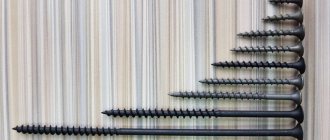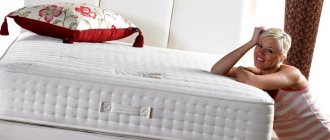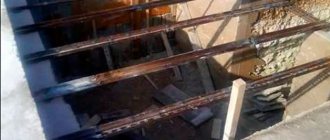X
The variety of floor coverings that have appeared on the building materials market in recent years has not been able to move linoleum from the pedestal of the most popular. It fits seamlessly into the interior of any room, including bedrooms, kitchens and children's rooms, can withstand the highest loads and compares favorably in price with other flooring.
Most often, linoleum flooring can be found in the kitchen. Despite the fact that linoleum is considered a fairly simple material, its choice requires the most careful approach to the type, texture, color and installation methods. Only with proper calculations and following step-by-step instructions can you not worry about the longevity of your kitchen floor.
Why linoleum in the kitchen
Helpful information:
- Choosing flooring for the kitchen
- Is it possible to lay tiles on linoleum?
- How to choose wood impregnation
- How to choose impregnation for concrete
- Which toilet is better to choose and buy?
- Which foundation is better for a house made of timber?
The kitchen, without exaggeration, can be called the most frequently used room in the entire house. In addition to the fact that all family members spend a lot of time here, the kitchen floor also experiences heavy loads from temperature changes and high humidity. And here, too, the possibility of difficult-to-clean greasy stains is greatest. Therefore, the choice of linoleum for this room should be based on the following factors:
- Hygiene and moisture resistance. The floor covering should not be afraid of frequent cleaning using household chemicals and large amounts of moisture.
- Lowest level of hygroscopicity. The material must be absolutely resistant to moisture absorption.
- Non-slip surface of the kitchen floor, even when wet.
- Resistance to the development of fungus, insects or microorganisms in the material.
- Preservation of the original appearance. Intense load associated with the movement of household members and frequent movement of furniture should not affect the appearance of the floor covering or its functionality.
- Strength, relative to mechanical impact. Dropped sharp objects or broken dishes should not damage the kitchen floor.
For a longer service life of linoleum, it is recommended to choose a roll of material in such a way that during flooring it is possible to reduce the number of welds, that is, so that a solid sheet almost completely covers the kitchen floor.
Kitchen flooring requirements
The first thing to consider is that the kitchen is the place where there is the most movement in the house. While food is being prepared and served, many feet are walked around the kitchen, and often even after dinner someone keeps coming into the kitchen to the refrigerator.
The second important detail is temperature changes, increased humidity and evaporation in the kitchen. And kitchen floors can sometimes become completely accidentally contaminated by hot grease splashing from frying pans.
Basic requirements for kitchen flooring:
- Moisture resistant and hygienic. It should be possible to regularly wet clean linoleum using detergents.
- Non-hygroscopic. Does not absorb moisture.
- Should not be slippery even when washing floors.
- Resistant to bacteria and insects.
- The surface must be resistant to abrasion.
- Durable so that a knife or fork falling on the floor will not damage it.
- Covering floor with a minimum number of joints and seams. The industry produces linoleum rolls up to 4 meters wide, so there shouldn’t be a problem with this point.
Types of linoleum
Linoleum is usually divided into a couple of types, each of which has its own characteristics:
Natural linoleum . For production, lime or cork conglomerate, crushed to a powder, various wood resins, linseed oil and natural pigments for coloring are used. The mixture is fixed on a natural base of jute or flax fibers.
The production technology has changed quite little since its original release. Modernization processes mainly affected only the stages of drawing, as well as aspects of the durability of linoleum colors.
The main advantages of natural linoleum coating can be considered:
- environmental friendliness;
- long service life (up to 45 years);
- resistance to aggressive effects of household chemicals and sunlight;
- increased wear resistance even with the most unsparing use;
- good heat and sound insulation;
- antiseptic properties, manifested through the use of linseed oil in the coating composition;
- low level of absorption of moisture, dirt and grease, which makes cleaning such a floor in the kitchen quick and easy;
- natural linoleum does not cause allergic reactions and can be safely used even in families with small children.
The only disadvantage of natural linoleum coating is its high price compared to artificial analogues. That is why it is more often used in bedrooms or children's rooms, and for places with high traffic, coatings made from budget, artificial components are chosen.
Synthetic linoleum . This flooring is not as durable as natural flooring (use for no more than 15 years, depending on the quality of the materials), but still has many advantages.
Synthetic linoleum can be polyvinyl chloride (PVC), alkyd, colloxyl or rubber. However, not all of these types are suitable for use in residential premises.
Colloxyl linoleum, created on the basis of nitrocellulose, is very durable and wear-resistant, but has an increased fire hazard. Its use in residential buildings and public places is strictly prohibited. Rubber linoleum is optimally suited for warehouse and industrial buildings, as well as for sports fields.
Glyphthalic flooring, created on a fabric basis, could be used in apartments, but is not in particular demand due to the complexity of installation and poor resistance to temperature changes.
PVC linoleum is the leader in installation in residential premises. Experts claim that it is absolutely safe for human health, non-toxic and does not cause allergies, with the exception of very rare cases associated with individual intolerance.
A linoleum coating consisting of several layers is called heterogeneous. If the material does not have a base and consists of only two layers (main and protective), then it is a homogeneous type.
PVC sewer pipes: dimensions, properties and installation
Heterogeneous PVC coating used in living areas and kitchens is a multi-component structure that includes:
- basis;
- PVC backing;
- special layer for strength. Most often made of fiberglass;
- thin layer of PVC;
- decorative film. It can be either plain or have a variety of patterns or imitations of wood or stone;
- transparency - a layer to increase the wear resistance of the coating, reaching a thickness of up to 0.7 mm;
- protective film.
The composition of the homogeneous version is much simpler, since, in fact, it has only one layer, and the pattern, if any, is applied to the surface itself, and does not appear as a separate film. The durability of homogeneous linoleum is quite high, and its appearance, even after prolonged wear, remains quite presentable. This coating is usually quite thin, but sometimes you can find sheets 15mm thick. Such models are not often used for finishing kitchen floors, as they are completely inexpensive.
Laying the floor in the kitchen with polyvinyl chloride linoleum has many advantages:
- this floor meets all the requirements for a kitchen floor;
- the material is easy to clean and does not require additional effort;
- linoleum has good moisture resistance and low gyroscopicity;
- PVC coating is not susceptible to mechanical damage and is not prone to abrasion;
- the average service life of such flooring is 15 years and above;
- affordability in comparison with laminate or parquet boards;
- ease of installation. You can do the flooring in the kitchen yourself without hiring hired workers;
- manufacturers offer a huge variety of color and texture solutions that will fit into the interior of any kitchen;
- Some models have a top relief layer that prevents slipping.
Varieties
There are different types of linoleum for the kitchen, which differ in resistance to abrasion, thickness and the presence or absence of a protective layer into three types:
- domestic;
- semi-commercial;
- commercial.
Household linoleum is distinguished by its affordable cost, variety of colors and rather low wear resistance. It may have a felt or polyurethane base.
Semi-commercial flooring is characterized by high wear resistance and the ability to retain heat well due to the presence of a felt and synthetic base.
Commercial linoleum is considered the most durable and durable. It is made from PVC. It does not have an additional substrate, and its structure has a homogeneous structure, thanks to which, even with prolonged use of such a floor, its pattern, imprinted to the full depth, does not wear out.
Expert advice will help you understand which linoleum is best suited for the kitchen. Commercial flooring will last a long time, as it is highly resistant to abrasion, which ensures the presence of a protective layer and a homogeneous structure. It does not absorb moisture, is fire-resistant and provides the hygienic conditions required for the kitchen.
Based on the type of material, such flooring is divided into natural and artificial. Natural linoleum is expensive, as it is produced on the basis of natural materials:
- jute fiber;
- flax fiber;
- pressed cork;
- limestone conglomerate.
Such material is expensive, like any type of environmental finishing. Natural linoleum is distinguished by:
- good wear resistance;
- moisture resistance;
- long service life 25-45 years;
- ability to withstand exposure to chemicals, ultraviolet radiation, detergents, moisture;
- resistance to mold and fungi due to natural impregnation with linseed oil, which has good bactericidal properties;
- ability to retain heat well;
- ability to repel various types of pollution.
If your budget allows, natural marmolium can be laid in the kitchen. Analogues of their synthetic materials are cheaper.
The choice of type of linoleum for the kitchen also depends on the financial capabilities of the homeowners.
It is more rational to lay such a covering in the nursery or in the bedroom in cases where you need to save on repairs. A coating made of polyurethane and rubber has the same characteristics, but costs several times less.
Classification, characteristics and areas of application
The performance qualities of linoleum are divided into three main classes, based on which you can determine the scope of its use. The class of linoleum coating is always indicated by a two-digit number, where the first number indicates the purpose, and the second – the degree of resistance to mechanical and abrasive loads.
If the first number is 2, then linoleum is suitable for housing, 3 means the material will serve well for office floors, retail and social establishments, and number 4 indicates models that work well in industrial buildings.
The following classes are in great demand:
- Commercial (industrial) material, designated by markings from 41 to 43. This linoleum has a dense but transparent protective film of polyurethane, reaching 0.7 mm thick. This coating serves well in workshops of industrial enterprises, logistics centers, and warehouses. The high performance capabilities of this class are not in demand in residential premises that do not have such an increased load.
- Semi-commercial linoleum. The protective layer of this linoleum has a thickness of about 0.5 mm and is marked with classes from 31 to 34. Its purpose is office floors, social and retail outlets. This material is designed for increased intensity of use due to its durable surface that is resistant to abrasive loads. Class 33 and 34 are coatings that can withstand the most maximum and even extreme loads. Examples of use include train stations and grocery supermarkets. Laying it in an apartment is impractical, again, based on budgetary considerations. Classes 31 and 32 are optimally suited for the kitchen, where such flooring will serve for many years without changing its original condition.
- Household linoleum. The coating intended for use in residential premises is marked from 21 to 23. Such linoleum can have a protective coating up to 0.5 mm thick. It can be used in any room of an apartment or house, but its service life will be slightly shorter compared to semi-commercial linoleum.
As a kitchen floor covering, it would be a good idea to use linoleum with the following characteristics:
- semi-commercial class (31 and 32);
- textured or micro-relief surface, non-slip and moisture resistant;
- with a protective layer thickness of 0.25 to 0.3 mm, no less.
Which class to choose for the kitchen?
- For residential premises, a product of classes 21-23 is recommended. It is not intended for heavy loads, but will perform well at home. The thickness of the protective coating on it ranges from 0.3 to 0.5 mm.
- If the premises are actively used, then it is worth buying a higher class, preferably 30-32 classes. Having a micro-relief textured - non-slip and non-hygroscopic surface. The thickness of the protective coating must be at least 0.3 mm.
- When purchasing, it is better to pay attention to models with a microstructure. This surface is non-slip and at the same time dirt does not accumulate in the micropores.
Linoleum sizes
The most common form of linoleum production is standard rolls, with a width of 1.5 to 5 m. However, there are other types of shapes that are considered more convenient for installation.
Square tiles or narrow long panels similar to laminate . This material is easy to install, perfectly imitating laminate boards, parquet, stone or ceramic tiles. The small size of the fragments allows you to install this coating yourself, even for beginners.
With proper markings and strict adherence to the lines, the installation process will be easy. Also, the advantages of this form of release include the possibility of quickly and easily dismantling a failed section of the kitchen floor and replacing it with a new one, without lifting the entire canvas.
The main disadvantage of tiled linoleum is the large number of seams, which is extremely undesirable for rooms with high humidity or high steam concentrations. Moisture or dirt between the seams can cause the material to peel away from the floor. This type of floor is washed using minimal water.
Liquid linoleum . Self-leveling flooring is an ideal choice for a kitchen floor. The seamless, monolithic surface of the coating is superior in quality to all other types of material, has a long service life and a huge variety of decorative and color solutions.
How to install a sink in a countertop with your own hands
The main advantage of self-leveling flooring is its excellent waterproofing. In addition, if the need or desire arises to modify the design of the kitchen, such a covering will not need to be dismantled, since it can be used as a perfectly flat base for a new flooring.
The kitchen floor, made of “liquid” material, withstands numerous cleanings, including wet ones using a variety of household chemicals. This flooring option is absolutely safe, as it contains polymerized epoxy and polyurethane resins.
The composition is diluted right before pouring onto the floor by mixing the base component and hardener. After the mixture hardens, a moisture-resistant, smooth surface is formed on the floor, with various decorative patterns and effects. It is not entirely correct to consider self-leveling polymer floors as “liquid” linoleum, but it is this comparison that allows buyers to remember what they are looking for, and sellers to understand what exactly the buyer wants.
Release forms
Not all types of linoleum are produced in the form of rolls. Some types of this flooring are available in the form of square slabs or panels resembling laminate in shape.
Material of this shape is easy to lay, and it is easy to replace damaged areas. The disadvantage of this form of release is that dirt and dust get into the seams on the floor. Over time, it leads to delamination of the material. This option is not suitable for the kitchen.
Liquid linoleum . It's not really linoleum. So, they call self-leveling polymer floors. Such floors have many advantages:
- have waterproofing properties;
- can serve as the basis for any floor covering;
- are not afraid of water;
- environmentally friendly and clean;
- can be of any color, with any pattern.
Checking the quality of linoleum for the kitchen
The quality of the linoleum coating offered by hardware stores can be judged by several fundamental points:
- Documents for each batch of linoleum must contain complete information about the manufacturer, his address and contact numbers. Such information is some guarantee that the plant is ready to answer for the quality of its product.
- Any batch of goods, regardless of its volume, must have appropriate certification, which the seller must present upon the first request of a potential buyer.
- High-quality linoleum does not have a strong unpleasant odor.
- There should be no signs of defects or minor defects not only on the front side of the material, but also on the inside.
- The surface must be uniform: smooth or textured. The exception is models where heterogeneity is provided for by the design approach or pattern.
- Pictograms on samples require special attention. They determine the sound insulation of the material, abrasion resistance, possible types of cleaning, its environmental friendliness and chemical resistance. Having finally decided on your choice, when making a purchase you should make sure that the rolls have the same batch number. Otherwise, the canvases may not fit well together in terms of seams, color and pattern.
What to look for when choosing
The market offers many variations of flooring with varying degrees of strength and design. Below is a description of the types of linoleum by material, number of layers and wear resistance.
Material of manufacture
An important criterion when purchasing linoleum is the raw material from which the coating is made. There are two main types of flooring depending on its composition - natural and synthetic. It is advisable to decide in advance which type to give preference to, because each of them has its own advantages and disadvantages.
Natural canvas is made from natural ingredients (lime powder, wood resins, linseed oil). It has high performance in terms of such characteristics as environmental friendliness, wear resistance, durability and ease of cleaning. At the same time, the price of such a product is very high.
Synthetic or artificial linoleum consists only of chemical components. Hence its disadvantages - low environmental friendliness, service life - significantly shorter than that of its natural analogue, toxicity when the temperature rises. However, the price of synthetic fabric is low, and the design and colors are much more varied and brighter than natural ones.
Number of layers
Based on the number of layers, linoleum is divided into two types: single-layer (homogeneous) and multi-layer (heterogeneous).
The second option is of higher quality and consists of the following layers:
- upper - has such properties as moisture resistance and resistance to mechanical stress, consists of polyurethane;
- protective - protects the surface from strong impact at one point, the thickness can reach about a centimeter;
- decorative - is craft paper with a pattern applied that can imitate various materials (leather, wood, marble);
- fiberglass - responsible for heat and sound insulation;
- polyvinyl chloride - a moisture-resistant layer that protects against the development of mold.
The quality and performance characteristics of the coating largely depend on the thickness of the layers. The larger it is, the higher the strength and durability of the material. Since the durability of the flooring is not very important for a residential building, you should purchase products with a high thickness of fiberglass layer.
Wear resistance
The wear resistance of linoleum is its ability to withstand any load for a long period without consequences for the surface. Wear resistance depends primarily on the thickness and composition of the material.
Along with wear resistance, there is a similar concept of “abrasion”. This term indicates the speed at which the top protective layer of the coating will thin out.
The degree of abrasion is divided into several groups:
- group “T” is the most durable type of product, almost not subject to abrasion;
- group “P” - moderately abraded material;
- group “M” - average abrasion;
- group “F” is the group most susceptible to abrasion.
Linoleum, intended for industrial premises and workshops in which heavy mechanisms and machines move, has the greatest wear resistance. The lowest wear resistance is for the material that is used for rooms with low traffic (bedroom).
Which design of linoleum is best to choose for the kitchen?
The coating intended for living rooms has the widest variety of colors and textures. For the kitchen, as the room that is most susceptible to contamination, it is recommended to select flooring with variegated colors that can hide small stains and streaks.
A pattern that imitates stone or wood will look very beneficial on the kitchen floor: marble tiles, wooden boards, parquet patterns.
Design solutions for the kitchen floor
The popularity of linoleum is explained by a wide range of design solutions in patterns and color palettes that can organically fit into any interior. Without resorting to labor-intensive and low-budget work on laying stone or ceramic surfaces, you can reproduce their imitation in the kitchen using the familiar, but constantly improving linoleum.
The floor in the kitchen gets dirty quite quickly, so for this area it is better to choose linoleum with a pattern or texture that can hide minor dirt. When choosing a light material with no patterns, it is worth remembering that it will require the most frequent cleaning using all kinds of detergents. Even the presence of a protective film that protects the coating from water penetration will not help extend the life of linoleum that is subject to daily aggressive cleaning.
In the kitchen, imitation wood while preserving natural shades, as well as all kinds of textured ornaments, will look great. Variations that imitate parquet, solid wood or laminate do not go out of fashion and continue to be a current trend in interiors.
Selection by composition
Which linoleum is best for the kitchen? It is necessary to proceed from two factors:
- resistance to oil and water;
- shock resistance.
Rubber linoleum copes well with impacts, but is not at all resistant to oil. Moreover, rubber dissolves from some detergents to clean fat, which reduces its service life.
On the contrary, the glypthal base is not afraid of oil and detergents, but is very fragile. If a pan or knife falls, it will crack, and it will be impossible to repair the crack.
We restore the kitchen set with our own handsDecorative plaster in the kitchen: its advantages, design features and application techniques, 140+ best photos
How to choose the right kitchen doors: based on functionality and design - 100 photo examples
PVC materials cope better with impacts (especially foamed plastic) and are not afraid of water and oil. Weak temperature resistance eliminates neatness - do not drop hot foods.
Natural linoleum is not afraid of impacts, oil and water, so it remains a leader. It is non-toxic, non-flammable, and easy to clean and maintain.
How to prepare a floor for linoleum
The coating is laid only on a perfectly flat and rigid base. The smaller the thickness of the chosen type of linoleum, the more impeccably smooth the base under it should be. Even the smallest and most inconspicuous grains of construction debris remaining under the linoleum will eventually lead to wear and tear of the material and simply tear it.
If there is an old covering on the floor that is in a suitable condition, then it can not be removed by laying the new material over the old one. The main thing is that the total thickness is not very large, and you will walk around the apartment as if in a swamp. The base must be thoroughly cleaned of concrete chips, and all cracks, small gaps or chips must be sealed with a special concrete-adhesive mixture.
Read how to repair the subfloor in a separate article.
Ideal floor smoothness is achieved using various self-leveling solutions, which are leveled over the surface using professional tools. If you plan to lay linoleum on plywood, then in this case the gaps are sealed with wood putty. Coating the base with a primer helps prevent mold and creates optimal adhesion for the adhesive layer. The final stage of preparation is to thoroughly vacuum the kitchen floor.
Linoleum design options
Linoleum coating is produced in various patterns and colors, so you can easily choose an option for a specific interior design. Thanks to this, the material does not lose its popularity and, despite the emergence of new coatings, is actively used in residential and non-residential premises. The pattern and surface relief can imitate one of the popular materials - solid boards, stone tiles, parquet, cork or laminate, or have a strict geometric or chaotic image.
Linoleum with a cork pattern
Important! It is not recommended to purchase a plain material, on which every crumb and small stain will be visible.
The best option is a multi-color, medium-sized pattern, made in the same color scheme with different shades. This design will help hide minor dirt, which will significantly save time on cleaning the room.
In addition, we must not forget that the coating should be in harmony with the color of the walls, furniture and decorative accessories. Therefore, it is best to draw up a color kitchen design project before purchasing everything you need, so that you can visually assess the harmony of the combination of shades.
How to care for linoleum in the kitchen
Laying linoleum
Laying linoleum on a properly prepared base is not at all difficult. However, minor difficulties may arise if the kitchen area has ledges, niches or corners with a complex configuration.
The linoleum must be left unrolled for 24 hours, only after which can you begin laying it. The leveled material is adjusted to the dimensions of the kitchen floor and cut. Cutting linoleum to the required size is the most important and complex process in linoleum flooring technology. It is imperative to leave a compensation gap (about 10mm) along the walls so that the cuts do not subsequently come out from under the baseboard.
Installation of a storage water heater - boiler
Linoleum can be laid in two ways:
- on glue. In this case, thin linoleum is laid, which is securely attached to the prepared bottom covering, preventing moisture and fumes from penetrating;
- glueless method. This type of flooring is used in cases where thick, insulated material is being laid, so as not to deteriorate its thermal insulation properties. The adhesive solution is applied with a wide spatula and with the same spatula it is evenly distributed over the entire surface.
It is better if the area treated with glue does not exceed 75-80 cm, this will facilitate step-by-step installation. A special rubber scraper levels the glued area and pushes out all excess glue from under the linoleum.
If the coating consists of several sheets, then they are laid with an overlap of about 60-70mm, then leveled and cut using a ruler, retreating from the edge of the top sheet by about 30-35mm. This method is only suitable if the canvases are perfectly matched to each other in texture and color.
If the material does not adhere to the base, before welding it is leveled and secured together using double-sided tape.
Welding of linoleum is carried out with a special apparatus using silicone or professional glue, which can be purchased at any hardware store. This method is also called “cold welding”. The two canvases are joined together, the seam is sealed with masking tape, and then a precise cut is made right along the seam, where the glue is carefully squeezed out of the tube on the edge of a knife. After a certain period of time, the adhesive tape is removed, and a barely noticeable, but quite strong seam remains on the canvas.
By type of cutting and texture
Traditionally, linoleum is sold in rolls, the width of which can vary. For the Kitchen, you need to use a solid coating that will not have joints. For a standard urban kitchen, they usually take rolled material 5 meters wide.
The length is determined by the size of the room, to which you need to add 8-10 cm on both sides for shrinkage. Wide rolls are more expensive than narrow ones, but they are easier to lay and last longer, since they do not have joints into which moisture and dirt can fall over time.
In addition to smooth roll coating options, today you can find linoleum for kitchen tiles, which will be a budget option for creating a tiled floor in the kitchen.
When choosing the color of such a floor covering, you should take into account the dimensions of the room. In a small kitchen, too colorful a tile floor will look out of place. It will only emphasize the small size of the room.
There is a canvas that has a texture that imitates laminate laying. It has a softer surface, on which deformations and dents will appear more quickly, but in addition to the disadvantages, such a floor covering also has its advantages.
It will fit perfectly into kitchen interiors that feature wood. At the same time, moisture will not get under such an imitation laminate, and the solid floor covering will not creak while moving on it and will provide good sound insulation in the kitchen.
This decorative layer of linoleum is suitable for creating interiors in country, Provence, and rustic styles.
In the kitchen you can put linoleum under the stone. Most often, manufacturers recreate a marble texture on the front side of such a coating. A surface that imitates stone will create a respectable atmosphere in the kitchen.
Linoleum under tiles
tiles or linoleum are chosen as flooring for the kitchen . The competition between these materials can be compared to a battle of the titans - both options are distinguished by high aesthetic and performance properties.
Expert opinion
Smirnova Ekaterina Anatolevna
7 years of experience in interior design, professional architect
That is why there is no clear answer to the question of what is better to lay tiles or linoleum in your kitchen . It's a matter of personal preference.
However, we suggest combining both options in one and purchasing linoleum for tiles :
- the pattern on it imitates tiles;
- You can choose a design to match the style of your kitchen - marble, granite or stone tiles.
Such a purchase has several advantages over laying real tiles - cost-effectiveness, ease of installation and ease of use (tiles can be quite slippery, which is dangerous).
Base for linoleum
In the middle of any linoleum there is a layer of fiberglass. The characteristics of linoleum vary depending on which substrate is used in the base, which is in contact with the floor surface, taking on all the shock-absorbing capacity, insulating functions and imparting strength and elasticity. Flooring with a base is considered more preferable, since it lasts longer and optionally has additional functions, for example, sound insulation, heat retention, and moisture protection.
For the base they often use:
- Felt is warm and soft, but it allows water to pass through and leaves dents on the furniture.
- Foamed vinyl does not allow water to pass through, is durable, holds its shape reliably, but is quite hard and loses its characteristics at high temperatures.
- Fabric with alkyd resins is environmentally friendly and safe, provides sound and heat insulation, has a high wear resistance class of linoleum, but does not tolerate low temperatures and water.
Thin linoleum without a base does not hide the unevenness of the floor, but it is resistant to moisture and inexpensive. This option consists of more than 2 layers and has a thickness of about 3 mm. This material can be laid on screed and leveled surfaces.
The nuances of laying linoleum covering
The work of laying linoleum is not particularly difficult, so it will not be difficult to carry out. However, in order for the coating to look aesthetically pleasing and last a long time, several rules must be followed.
The first thing you need to do is spread the canvas on the surface, as it must lie down and straighten out, this process takes about a day. If necessary, in places where there are protrusions or indentations, careful cuts are made so that the material lies as evenly as possible.
Trimming excess coating
After the above time, the edges of the coating on the walls must be trimmed. To ensure that the linoleum does not swell over time, it is necessary to leave a compensation gap between it and the wall, which will allow the material to expand when exposed to changes in temperature in the room.
Fixing linoleum to the floor can be done in two ways:
- along the perimeter by pressing it with baseboards to the floor;
- the canvas is completely glued to the surface of the base.
The second option is longer and more complex to execute, since the process will consist of several stages, one of which is squeezing out excess glue and air from under the just pasted material.
Important! If the installation is carried out correctly, the coating will last longer than that which is pressed to the floor with baseboards.
When gluing linoleum to the base, it must be rolled up
The adhesive is applied to the floor surface from the corner of the room, approximately 500-700 mm, over the entire width of the covering. After laying the edge of the linoleum sheet on the glue, excess glue and air are expelled from under it using a wide rubber spatula. Then the next section of the base is covered with an adhesive composition, the linoleum is straightened out, glued to it, and the glue is again expelled from under the laid section. This process is repeated until the entire canvas is secured to the opposite wall.
linoleum glue
Bonding linoleum by cold welding
If you have to connect two coating sheets, then the most affordable method that does not require the use of expensive tools is cold welding. In addition to the glue itself, you will need double-sided tape and masking tape to carry out the process.
The first step is to glue the spread and aligned sheets together on the reverse side and secure them to the floor using double-sided tape. To do this, it is first glued to the base along all the joint lines. Then, as the linoleum is being fixed, the protective film is removed from the tape, and the material is pressed against the glue.
Next, masking tape is fixed on top of the joint, then it is carefully cut along the joint and the resulting gap is filled with cold welding compound. After it hardens, the adhesive tape is removed.
The final stage of work when laying linoleum, which is carried out after removing the tape, is the installation of skirting boards that will press the edges of the covering to the floor.
All of the above recommendations will allow you not only to choose the right coating for the kitchen, but also to install it yourself, thereby saving a decent amount.
Which linoleum is better for the kitchen - household or semi-commercial
A layer of protection applied to the surface protects the image and provides abrasion resistance to the linoleum. The service life and wear resistance are determined by the thickness of the sheet. This indicator determines the division of linoleum flooring into the following types:
Despite the fact that the kitchen belongs to domestic premises, it is better to choose semi-commercial material for your choice of linoleum for the kitchen. It can withstand increased loads and has higher wear-resistant properties.
Wear resistance classification
The wear resistance of the material is classified according to the European system. According to the system, abrasion resistance is indicated by a two-digit number. The first number indicates the type of room, and the second indicates the intensity of the load. It is preferable that the class of linoleum for the kitchen should be 23, and preferably 31-32.
Types of coating
The usual appearance for linoleum is a roll of polymer material. It is elastic, easy to process, and therefore ideal for covering floors in any room. However, few people know that the roll that is familiar to everyone is only a semblance of the natural coating that was originally called “linoleum”.
In this regard, owners who are considering various types of coating are faced with the question of which material is more profitable: natural or synthetic (read: “What types of linoleum for flooring are on the market today - their characteristics”).
Decors and colors of linoleum
This coating comes in a huge variety of colors and designs. Manufacturers of natural linoleum have learned to give it bright and rich colors that do not fade over time.
The decorative possibilities of PVC linoleum are even wider. PVC flooring can very reliably imitate natural materials - most often, wood, stone, ceramic tiles.
Very popular types of decor are imitation of expensive piece parquet or wide parquet boards. Linoleum often reproduces the appearance of not only beech, oak or cherry, but also exotic wood species, such as bamboo, zebrawood, rosewood and others.
At the same time, the surface of the flooring reproduces not only the pattern, but also the texture of natural wood.
Linoleum decor, which imitates the marquetry technique, is also in great demand. This is the name for wood mosaic made from various types of veneer. High-quality linoleum, imitating a solid board, looks very good in the kitchen interior.
Fantastic colors and unusual decors will appeal to bold and extraordinary people. For those who like to experiment with the interior, PVC coating manufacturers offer original geometric or abstract designs. A good solution is to use bright, plain linoleum with a relief texture in a modern-style kitchen.
Stone-like linoleum looks very impressive and unusual - most often marble or granite. You can often find a coating that reproduces “aged” materials - worn stone or wood with traces of time.
The most traditional and win-win solution for the kitchen is to choose linoleum that imitates ceramic tiles . You can also use PVC tiles. In terms of their qualities, they are in no way inferior to traditional roll coverings.
Another option is to use narrow rectangular slats. They allow you to very reliably imitate laying parquet end-to-end or in a herringbone pattern. Such elements make it possible to experiment with styling options and create original patterns.
Within one collection, as a rule, you can choose cooler or warmer shades that will fit perfectly into the interior of your kitchen. Using linoleum with two different decors, you can zone the kitchen and dining room.
Types of linoleum
For convenience, linoleum sheets are classified according to the area of application, the main layer, the material of additional layers and finishing coatings. According to its structure, it is divided into heterogeneous (multilayer) and homogeneous (single-layer).
There is a UPEC classification:
- U – wear resistance.
- P – deformation.
- E – water permeability.
- C – chemical resistance.
For installation in a residential area, a fairly light coating is provided:
- “21” – mounted in places with little traffic: storerooms, utility rooms, bedrooms.
- “22” – installed where traffic is average: halls, library hallways, offices.
- “23” – suitable for intensive loads: corridors, kitchens.
Flooring that is designed specifically for commercial purposes:
- “31” – designed for small offices, hotels, where few people pass.
- “32”, “41” - mounted where the traffic intensity is average.
- “33” - for passages with high traffic rates: elevators, salons, boutiques, cafes.
- “34”, “42”, “43” - able to withstand heavy traffic in government institutions, workshops, wholesale warehouses, gyms.
The class and additional characteristics of the material are usually indicated on the back of the canvas in the form of icons or pictures.

